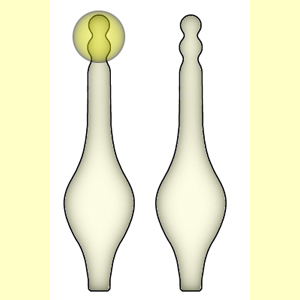
Gloeosphex cystidia have a characteristic narrow apex in the shape of an hourglass, surrounded by a droplet. The droplet may partially collapse or disappear, depending on the state of preservation of the specimen, or is occasionally not formed. The hourglass apex is 4-10 x 1.5-4 micrometres. Sometimes more than one hourglass structure can be present at the apex. The body of the cystidium can be clavate, fusiform or lageniform.
Examine the lamellar edge for the presence of gloeosphex cystidia.
Choose this state if: at least some gloeosphex cystidia are present in the hymenium. This type of cystidium occurs in Hohenbuehelia, where they are found in the fruit-body (as cheilocystidia, pleurocystidia, pileocystidia or caulocystidia), and also in culture. Gloeosphex cystidia also occur in Panellus ligulatus.
Otherwise, gloeosphex cystidia are reported only from Pleurotus, as cheilocystidia, but the hourglass shape is not as well-formed as in Hohenbuehelia.
Both Hohenbuehelia and Pleurotus produce compounds toxic to nematodes.
